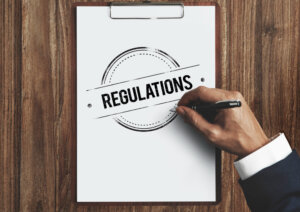© Copyright Carter McNamara, MBA, Ph.D., Authenticity Consulting, LLC. Adapted
from the Field Guide to Leadership and Supervision in Business and
Field Guide to Leadership and Supervision for Nonprofit Staff.
Strongly Suggested Pre-Reading
Performance
Management: Traditional and Progressive Approaches
Overview
of Performance Management Process for any Application
Performance
Planning Phase
Approaches to Doing a Performance Appraisal
Remember that information in this section is generic to performance management,
that is, the information generally applies to any domain of performance management,
including an organization, an internal and recurring process, a team, or an employee.
The performance appraisal phase generally occurs after the Performance
Planning phase. Keep in mind that the three phases (performance planning,
performance appraisal, and development planning) are all cyclical and highly integrated in nature. As in our description of performance planning, we will continue with
our example of the machine operator. So at this point in our example, a performance
plan has already been developed for the operator.
9. Conduct ongoing observations and measurements to track performance
The operator’s supervisor would observe the number of high-quality prints, including
to share feedback with the operator’s internal customer, the Director of the
Catalog Department.
- In a progressive
approach, this would also occur, as the sharing of feedback with customers
is extremely important.
10. Exchange ongoing feedback about performance
Feedback is information relevant to how well results are being achieved. Useful
feedback is timely, feasible, and understood. Ideally, feedback addresses key activities
to improve or reinforce performance. Usually, the larger the number of sources
giving feedback, the more accurate the depiction of events. In our example,
the employee, supervisor, and Director of the Catalog Department should continue
to share impressions of how well results are being achieved. Any ideas to improve
or support performance should be implemented as appropriate. This ongoing
feedback is often one of the most important aspects of performance management.
- In a progressive
approach, this would also occur, as the sharing of feedback with the domain
(in our example, the operator) is extremely important.
11. Conduct a performance appraisal (sometimes called a performance review)
A performance appraisal (or review) includes documentation of
expected results, standards of performance, progress toward achieving results,
how well they were achieved, examples indicating achievement, suggestions to
improve performance, and how those suggestions can be followed. If the above
activities in the performance management process were followed, the performance
appraisal is usually quite straightforward to carry out. In our example, the
appraisal should include input from the employee, supervisor, and Director of
the Catalog Department. The performance appraisal should be carried out at regular
intervals as performance tracking is underway.
- In a progressive
approach, performance review documentation, and meetings would occur more
then once a year in order to remain relevant to any changes in the organization,
the customers and/or the operator’s goals. The review would not include any
surprises for the operator, as any concerns about performance would have been
addressed as soon as they occurred.
12. If performance meets desired performance standards, the reward for performance
In our example, the machine operator may be due some form of reward, that is,
recognition or compensation, for example, a letter of recognition, promotion
or letter of commendation.
- In a progressive
approach, arrangements to tie compensation to performance might be agreed
upon between the supervisor and employee. (See The
Pros and Cons of Tying Compensation to Performance Reviews.)
Next, see
Development
Planning
Learn More in the Library’s Blogs Related to Performance Appraisals for Employees,
Teams, Processes, and Organizations
In addition to the articles on this current page, see the following blogs which
have posts related to Appraisals for Employees, Teams, Processes, and Organizations.
Scan down the blog’s page to see various posts. Also, see the section “Recent
Blog Posts” in the sidebar of the blog or click on “next” near
the bottom of a post in the blog.
Library’s
Human Resources Blog
Library’s
Leadership Blog
Library’s
Supervision Blog
For the Category of Performance Management:
To round out your knowledge of this Library topic, you may want to review some related topics, available from the link below. Each of the related topics includes free, online resources.
Also, scan the Recommended Books listed below. They have been selected for their relevance and highly practical nature.
Performance Appraisal: Key to Effective Performance Management
© Copyright Carter McNamara, MBA, Ph.D., Authenticity Consulting, LLC. Adapted
from the Field Guide to Leadership and Supervision in Business and
Field Guide to Leadership and Supervision for Nonprofit Staff.
Strongly Suggested Pre-Reading
Performance
Management: Traditional and Progressive Approaches
Overview
of Performance Management Process for any Application
Performance
Planning Phase
Approaches to Doing a Performance Appraisal
Remember that information in this section is generic to performance management,
that is, the information generally applies to any domain of performance management,
including an organization, an internal and recurring process, a team, or an employee.
The performance appraisal phase generally occurs after the Performance
Planning phase. Keep in mind that the three phases (performance planning,
performance appraisal, and development planning) are all cyclical and highly integrated in nature. As in our description of performance planning, we will continue with
our example of the machine operator. So at this point in our example, a performance
plan has already been developed for the operator.
9. Conduct ongoing observations and measurements to track performance
The operator’s supervisor would observe the number of high-quality prints, including
to share feedback with the operator’s internal customer, the Director of the
Catalog Department.
- In a progressive
approach, this would also occur, as the sharing of feedback with customers
is extremely important.
10. Exchange ongoing feedback about performance
Feedback is information relevant to how well results are being achieved. Useful
feedback is timely, feasible, and understood. Ideally, feedback addresses key activities
to improve or reinforce performance. Usually, the larger the number of sources
giving feedback, the more accurate the depiction of events. In our example,
the employee, supervisor, and Director of the Catalog Department should continue
to share impressions of how well results are being achieved. Any ideas to improve
or support performance should be implemented as appropriate. This ongoing
feedback is often one of the most important aspects of performance management.
- In a progressive
approach, this would also occur, as the sharing of feedback with the domain
(in our example, the operator) is extremely important.
11. Conduct a performance appraisal (sometimes called a performance review)
A performance appraisal (or review) includes documentation of
expected results, standards of performance, progress toward achieving results,
how well they were achieved, examples indicating achievement, suggestions to
improve performance, and how those suggestions can be followed. If the above
activities in the performance management process were followed, the performance
appraisal is usually quite straightforward to carry out. In our example, the
appraisal should include input from the employee, supervisor, and Director of
the Catalog Department. The performance appraisal should be carried out at regular
intervals as performance tracking is underway.
- In a progressive
approach, performance review documentation, and meetings would occur more
then once a year in order to remain relevant to any changes in the organization,
the customers and/or the operator’s goals. The review would not include any
surprises for the operator, as any concerns about performance would have been
addressed as soon as they occurred.
12. If performance meets desired performance standards, the reward for performance
In our example, the machine operator may be due some form of reward, that is,
recognition or compensation, for example, a letter of recognition, promotion
or letter of commendation.
- In a progressive
approach, arrangements to tie compensation to performance might be agreed
upon between the supervisor and employee. (See The
Pros and Cons of Tying Compensation to Performance Reviews.)
Next, see
Development
Planning
Learn More in the Library’s Blogs Related to Performance Appraisals for Employees,
Teams, Processes, and Organizations
In addition to the articles on this current page, see the following blogs which
have posts related to Appraisals for Employees, Teams, Processes, and Organizations.
Scan down the blog’s page to see various posts. Also, see the section “Recent
Blog Posts” in the sidebar of the blog or click on “next” near
the bottom of a post in the blog.
Library’s
Human Resources Blog
Library’s
Leadership Blog
Library’s
Supervision Blog
For the Category of Performance Management:
To round out your knowledge of this Library topic, you may want to review some related topics, available from the link below. Each of the related topics includes free, online resources.
Also, scan the Recommended Books listed below. They have been selected for their relevance and highly practical nature.
Performance Appraisal: Key to Effective Performance Management
© Copyright Carter McNamara, MBA, Ph.D., Authenticity Consulting, LLC. Adapted
from the Field Guide to Leadership and Supervision in Business and
Field Guide to Leadership and Supervision for Nonprofit Staff.
Strongly Suggested Pre-Reading
Performance
Management: Traditional and Progressive Approaches
Overview
of Performance Management Process for any Application
Performance
Planning Phase
Approaches to Doing a Performance Appraisal
Remember that information in this section is generic to performance management,
that is, the information generally applies to any domain of performance management,
including an organization, an internal and recurring process, a team, or an employee.
The performance appraisal phase generally occurs after the Performance
Planning phase. Keep in mind that the three phases (performance planning,
performance appraisal, and development planning) are all cyclical and highly integrated in nature. As in our description of performance planning, we will continue with
our example of the machine operator. So at this point in our example, a performance
plan has already been developed for the operator.
9. Conduct ongoing observations and measurements to track performance
The operator’s supervisor would observe the number of high-quality prints, including
to share feedback with the operator’s internal customer, the Director of the
Catalog Department.
- In a progressive
approach, this would also occur, as the sharing of feedback with customers
is extremely important.
10. Exchange ongoing feedback about performance
Feedback is information relevant to how well results are being achieved. Useful
feedback is timely, feasible, and understood. Ideally, feedback addresses key activities
to improve or reinforce performance. Usually, the larger the number of sources
giving feedback, the more accurate the depiction of events. In our example,
the employee, supervisor, and Director of the Catalog Department should continue
to share impressions of how well results are being achieved. Any ideas to improve
or support performance should be implemented as appropriate. This ongoing
feedback is often one of the most important aspects of performance management.
- In a progressive
approach, this would also occur, as the sharing of feedback with the domain
(in our example, the operator) is extremely important.
11. Conduct a performance appraisal (sometimes called a performance review)
A performance appraisal (or review) includes documentation of
expected results, standards of performance, progress toward achieving results,
how well they were achieved, examples indicating achievement, suggestions to
improve performance, and how those suggestions can be followed. If the above
activities in the performance management process were followed, the performance
appraisal is usually quite straightforward to carry out. In our example, the
appraisal should include input from the employee, supervisor, and Director of
the Catalog Department. The performance appraisal should be carried out at regular
intervals as performance tracking is underway.
- In a progressive
approach, performance review documentation, and meetings would occur more
then once a year in order to remain relevant to any changes in the organization,
the customers and/or the operator’s goals. The review would not include any
surprises for the operator, as any concerns about performance would have been
addressed as soon as they occurred.
12. If performance meets desired performance standards, the reward for performance
In our example, the machine operator may be due some form of reward, that is,
recognition or compensation, for example, a letter of recognition, promotion
or letter of commendation.
- In a progressive
approach, arrangements to tie compensation to performance might be agreed
upon between the supervisor and employee. (See The
Pros and Cons of Tying Compensation to Performance Reviews.)
Next, see
Development
Planning
Learn More in the Library’s Blogs Related to Performance Appraisals for Employees,
Teams, Processes, and Organizations
In addition to the articles on this current page, see the following blogs which
have posts related to Appraisals for Employees, Teams, Processes, and Organizations.
Scan down the blog’s page to see various posts. Also, see the section “Recent
Blog Posts” in the sidebar of the blog or click on “next” near
the bottom of a post in the blog.
Library’s
Human Resources Blog
Library’s
Leadership Blog
Library’s
Supervision Blog
For the Category of Performance Management:
To round out your knowledge of this Library topic, you may want to review some related topics, available from the link below. Each of the related topics includes free, online resources.
Also, scan the Recommended Books listed below. They have been selected for their relevance and highly practical nature.
 Sections of this topic
Sections of this topic
















